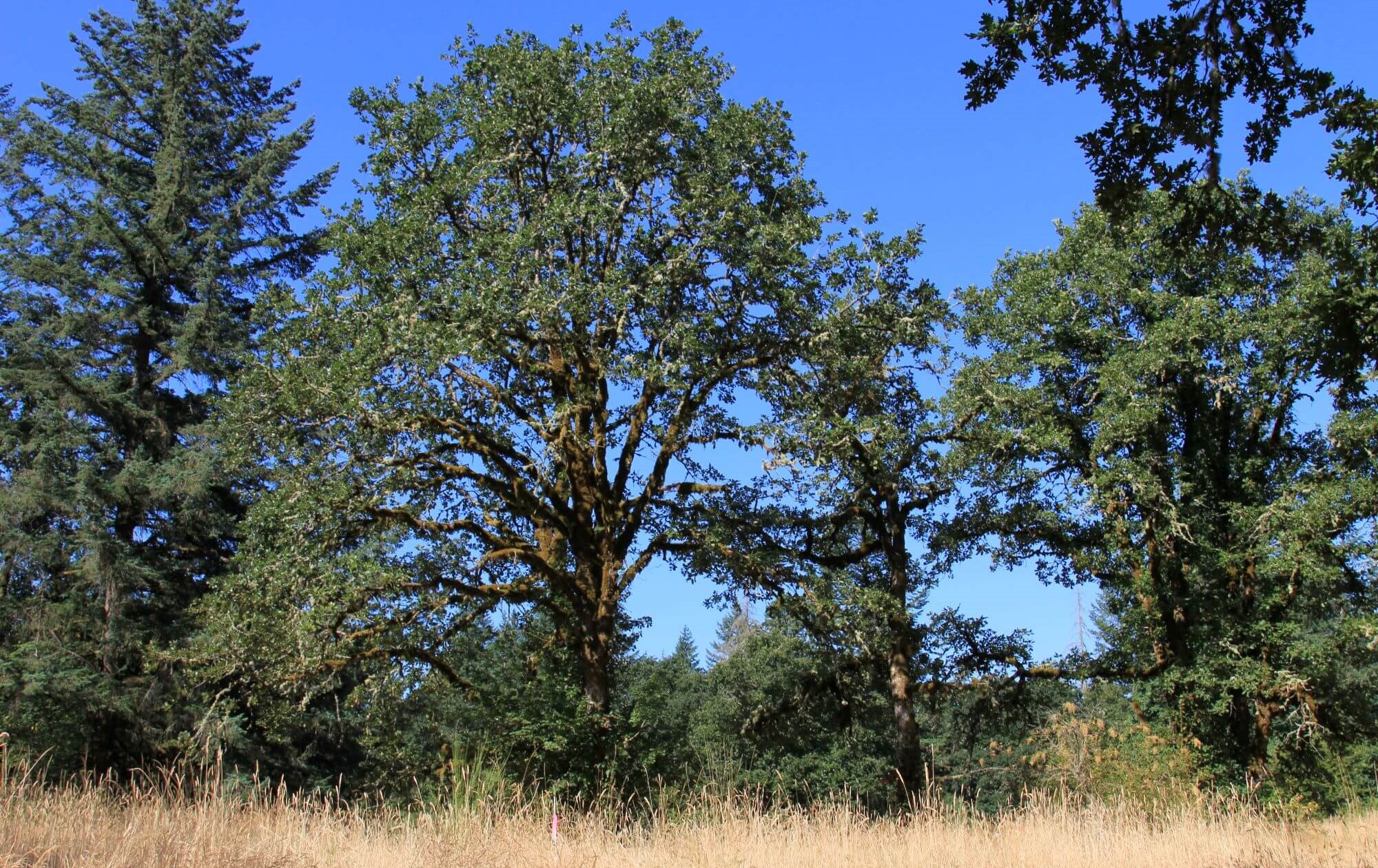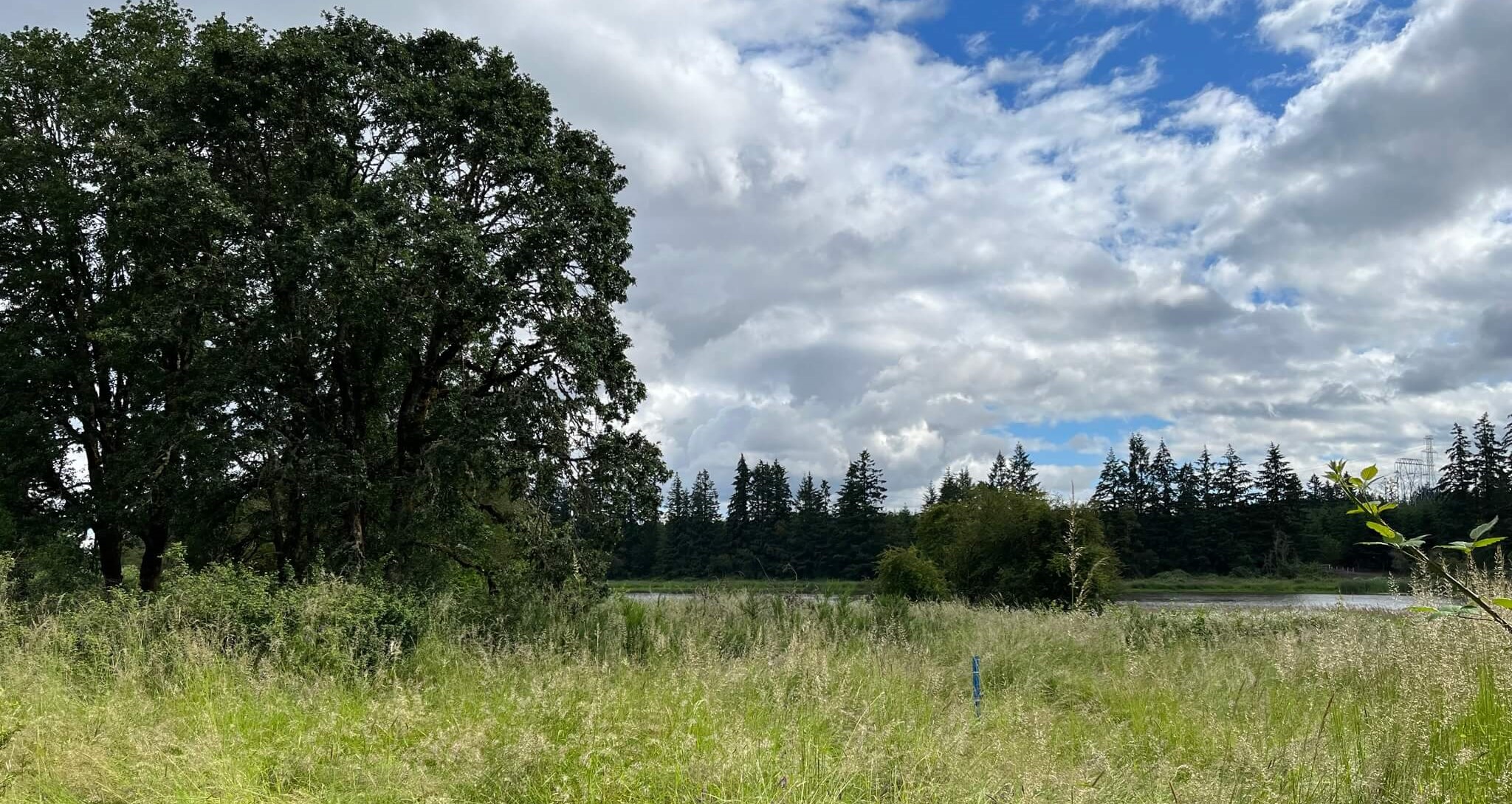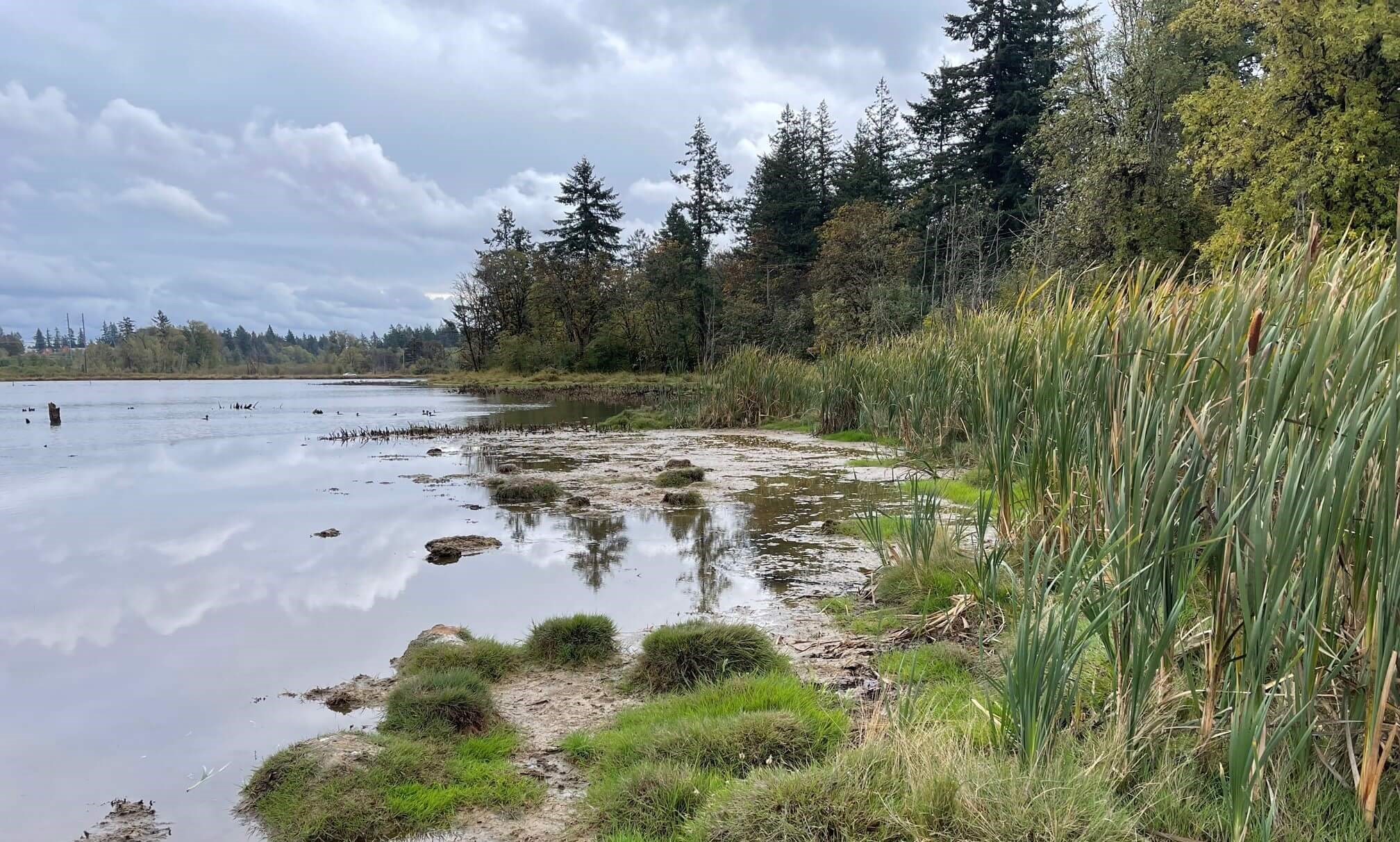
Tiny but mighty: that’s the big takeaway from Metro’s Coffee Lake Creek 3.67-acre land acquisition. And despite its size, the acquisition is an accomplishment over 25 years in the making. Bringing together the North Coffee Lake Creek Wetlands and the Tonquin Scablands, the additional land creates an almost 100-acre contiguous stretch of wildlife habitat and a mile-long protected creek area. A bit further away, across the road, is another 265-acre protected wetland. Together these three areas create an over 350-acre protected landscape hosting threatened wetlands and upland oak habitats, both of which are conservation priorities for the Willamette Valley.
The habitat
The conservation areas lie just outside of Portland, Oregon, near Wilsonville, at the tip of the Willamette Valley. They host a variety of habitats, including lush forests, streams, picturesque oak woodlands and prairies, wetlands, and a variety of rare plant communities. But particularly significant for the Willamette are the oak habitats.
According to the US Fish and Wildlife Service, oak and prairie habitats “once covered about 1.8 million acres, or about half of the Willamette Valley.” But today, only around 47,000 acres remain. Many threats led to this massive loss of oak and prairie habitat, including fire suppression, introduced and invasive species, and urban development, all of which remain issues today.

What makes oak and prairie special?
Oak and prairie habitats are some of the most biodiverse in the Northwest, containing chaparral, woodland, mixed forests, endemic plants, and over 300 vertebrate species. Providing acorns, cavities for nesting, shade, and more – oaks are critically important for both wildlife and people. Native peoples in the area have and continue to rely on oaks and oak-associated ecosystems for food and materials, with oaks becoming part of their culture and traditions. Oaks also have natural adaptations to disturbance and fire, leading to reduced fire intensity on the landscape and the growth of other fire-resistant species.
In addition to the benefits for people, around 50 species of birds are highly associated with oak and prairie habitats. Many of these are migratory birds that breed in the Pacific Northwest, but winter further south along the Pacific Flyway. Maintaining and restoring this habitat means species like the Oregon vesper sparrow, Lewis’s woodpecker, and Common Nighthawk can continue to thrive.
Partners in the Willamette Valley, and Oregon at large, are deeply committed to the maintenance and restoration of oak and prairie habitats in addition to other threatened habitats. Metro is one of these partners – starting in 1997, they began purchasing pieces of land in the Coffee Creek Lake area, bringing together this conservation zone. Together, the pieces create a large, connected landscape and haven for everything from amphibians to insects to birds. But you might be thinking – why does it matter if the landscape is connected or not?
"Climate change is stressing plant and animal species populations in ways and at intensities that create major challenges for individuals to find what they need to survive. Preserving existing corridors for species movement, and creating new ones through restoration, is one way we can support our wild neighbors as they seek out food, water, and shelter."
- Andrea Berkley, Senior Natural Resources Scientist, Metro Parks and Nature
What is habitat connectivity and why does it matter?
Habitat connectivity is determined by the way the landscape allows for, or impedes, species’ movement and ecological processes. Loss of habitat connectivity can impact the distribution of an animal or plant, their genetic diversity, their access to key food and natural resources, and their overall health. With greater habitat connectivity comes a greater ability to travel, increasing gene exchange and access to resources. Andrea Berkley, a Senior Natural Resources Scientists at Metro Parks and Nature, shared a bit more about the significance of habitat connectivity, highlighting that “climate change is stressing plant and animal species populations in ways and at intensities that create major challenges for individuals to find what they need to survive,” and that “preserving existing corridors for species movement, and creating new ones through restoration, is one way we can support our wild neighbors as they seek out food, water, and shelter."
In urban areas, preserving habitat connectivity is increasingly important, where roads, cars, and development can block species’ ability to travel, and introduced species and pollution can impact food availability. By connecting both water and terrestrial habitats, the Coffee Creek Lake acquisition ensures the continuation of habitat connectivity in the area.

The future
In addition to helping connect natural areas, Metro has plans to restore the property, ensuring the habitat is suitable for wildlife. While this will take time, restoration plans include replanting native vegetation and removing invasive vegetation. Together, this provides habitat for beavers, amphibians, reptiles, and birds, while also protecting neighboring land from flooding.
We’re thrilled to see this critical natural area in the Willamette Valley grow and are looking forward to seeing its restoration progress over the next few years. You can learn more about the project in their blog post, ‘Missing link: the steady evolution of a wildlife corridor’ on the project and surrounding natural areas. Hat’s off to our partners at Metro for all the great work they are doing for birds, people, and the planet.
